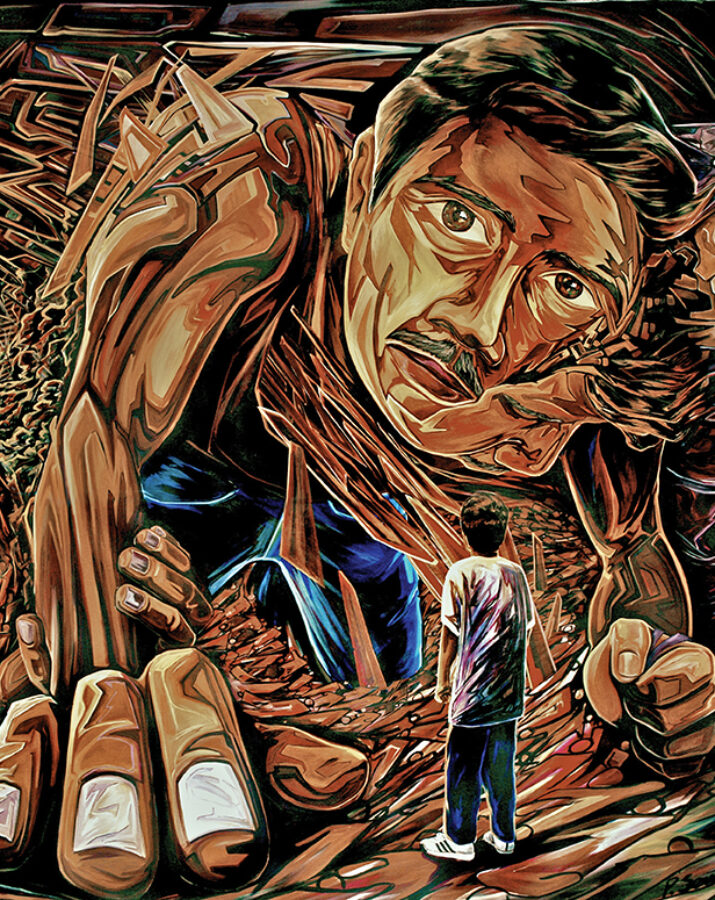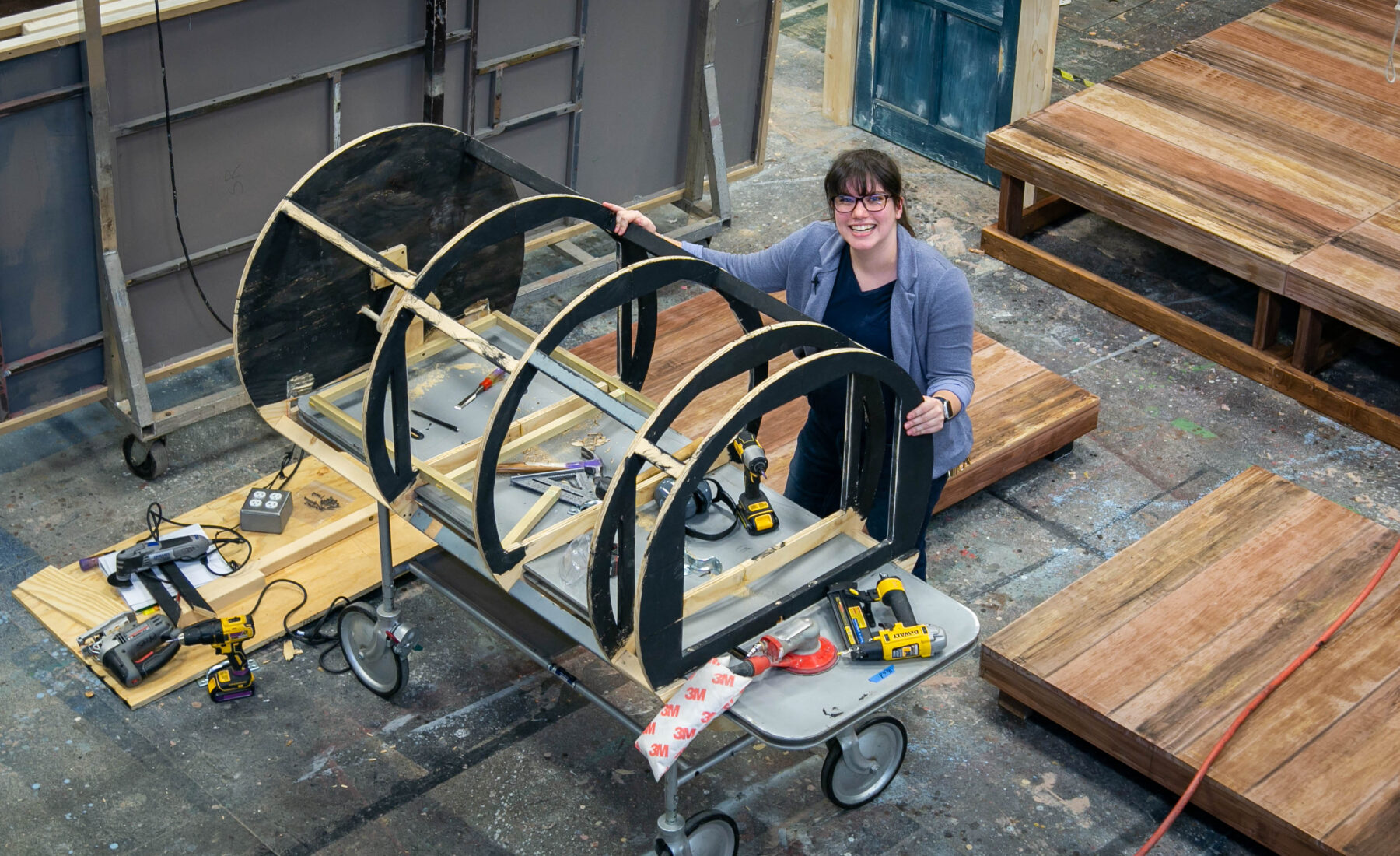What made you decide to come to Illinois?
I’d never been downstate when I got accepted to Illinois. I had no idea what I was getting into, but a bunch of my friends were going there, and I was like, you know something, they have a really good art school, and I’ll just figure it out!

My roommate at Illinois Street Residence Halls was the most radical, political Latino from Chile I’d ever met. His family had gone into exile when Pinochet, the crazy dictator, murdered Salvador Allende. His parents had fled to the U.K., and now he was there in the dorm with me. [Pablo laughs.] He was just amazing. I knew then that I was in the right spot.
I was coming from Whitney Young High School [Michelle Obama is an alumna], and when I got to Illinois, it was just amazing to experience that part of the state. It made me realize I was very hyperlocal in my work, that my home was just a base. My experience at Illinois dramatically expanded my understanding of the world. It has an amazing graphic design program, and the head at the time, Ken Carls, was influential to me. The financial aid and support systems, like the art school and La Casa, helped me stay at Illinois—especially the director of La Casa at the time, Giraldo Rosales, who asked me to paint murals for the La Casa building. These were my first serious projects.
How did you become interested in art? Who are your influences?
When I was young, my high school art teacher showed me the work of José Clemente Orozco. He was one of the “big three” known as the Mexican Muralists: Diego Rivera, David Alfaro Siqueiros, and Orozco.
The work that my teacher showed me was a portrait of Hernán Cortés, the Spanish conquistador who conquered Mexico in the early sixteenth century. It was painted by Orozco in a place called Hospicio Cabañas in Guadalajara, one of the oldest and largest hospital complexes in the Americas. That building is like a cathedral to public art that was commissioned in the 1930s. He was asked to paint the story of the conquest of Mexico for a public that had just been through a civil war ten years before, where millions of Mexicans died. After the war, the new government started taking on the challenge of forging its own identity, embracing their own history and their own culture. Public art was one of the ways they did that. They commissioned projects from Orozco, and his portrait of Cortés at Hospicio Cabañas is very striking. Cortés’ hand is a sword and his legs seem to be made of metal, a weeping Christian angel is whispering to him, and he is standing over butchered bodies of the indigenous people of Mexico all around him. As a sixteen-year-old, seeing that I was like, “This is serious. This is important.”
That really changed things for me and added a whole other social dimension to my work.
Ever since then, into college and after, I’ve carried that history and that interest with me more than anything else. In my travels to Mexico, I’m always looking at public art through that lens: How do we share our stories? What are we commemorating? What are we challenging? How do I get involved?
As I look at this mural, I see some familiar faces. Can you tell me about the people you chose to include in the mural?
This is a high school, so I depicted all these famous figures in their high school years. The idea is that you need to be able to see yourself in all these people. They are obviously different community leaders, but as teenagers they are not yet in their prime. I wanted them to be a mirror to where they were at when they were the students’ age.

On the top right you have Barack and Michelle Obama, and a young César Chávez. Dolores Huerta is just below, and then on the left are Sonia Sotomayor, Martin Luther King, Jr., and Dr. Hector Garcia, a doctor in the army during World War II, who was a huge proponent of civil rights in Texas and helped start the GI forum for Mexican-American vets. He completely embodies the best in the classic American story. Next to him is Malcolm X as a young person. Everyone else was a student at Farragut. At some point, everyone was of high school age, college age, and obviously what happened after that period in their lives is what distinguishes them from a lot of other people.
You never know where life is going to take you when you’re sixteen, seventeen, eighteen. That’s the whole idea of the mural: juxtaposing the giant with the everyday students. Our students have to connect with the idea that the future is theirs. You never know where you’re going to go.
You’ve been running a thriving karaoke business for the past eight years. How does that fit into your life as a painter-muralist?
The music is more about the experience in the moment. It is free to everyone who wants to come out to sing whatever they want to sing—in their language, in their culture, whether it’s R&B or a Mexican folk song. I view my karaoke night through this educational lens. Like, how do I make sure that everyone is included? What’s my role as someone who is facilitating this? How do I support people singing a song to an audience who may not be prepared for it? I’m gonna do my best, whether I’m singing with you or getting out of the way of your shine, so that you feel a connection with the group.
And then the art, the individual art, is a way to leave a mark. A way to physically influence the world around us. That isn’t something passive but it’s active, the way we influence and shape our surroundings. The mural is a particular affirmation or challenge to ourselves and to everyone we share the world with.
This story was published .







